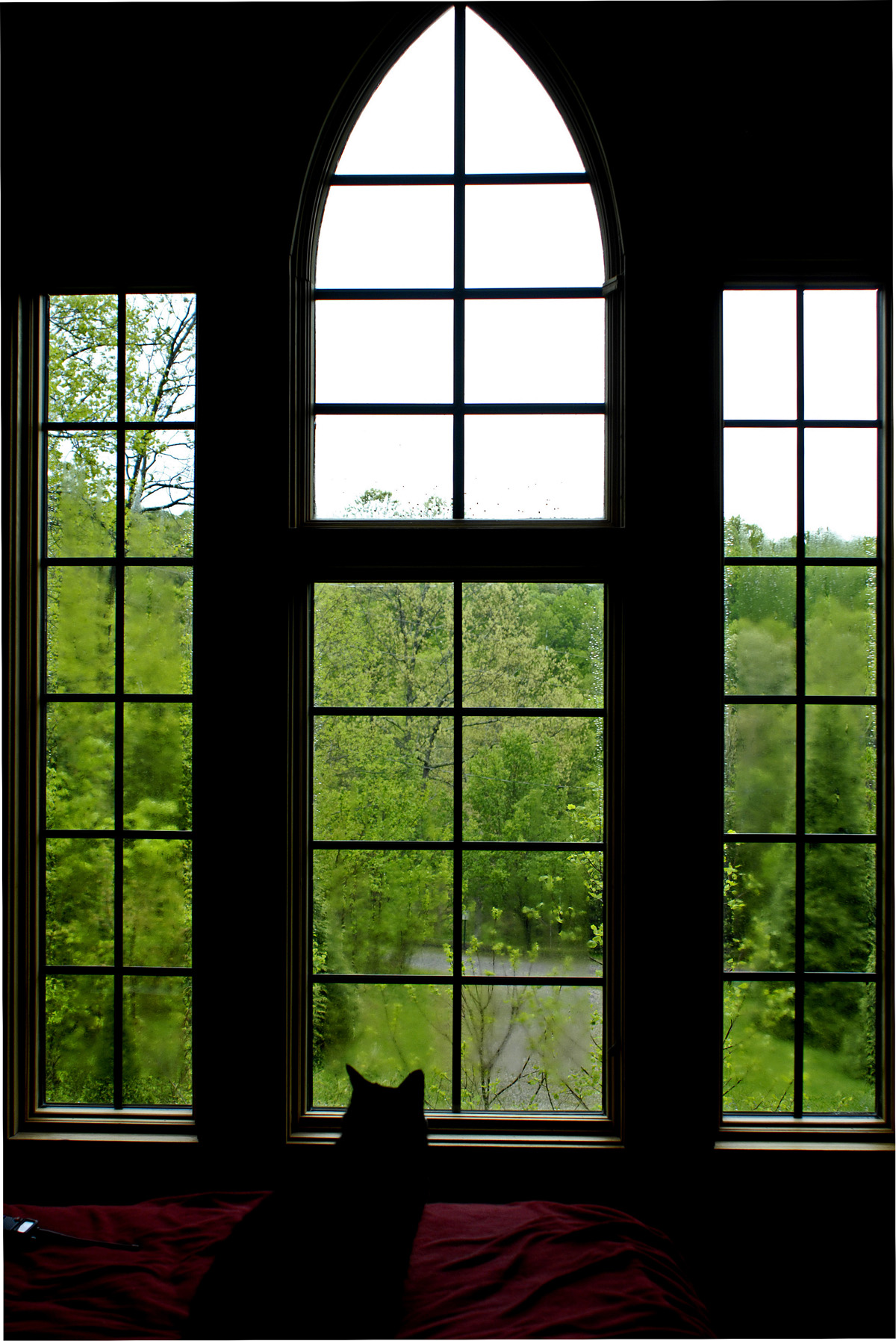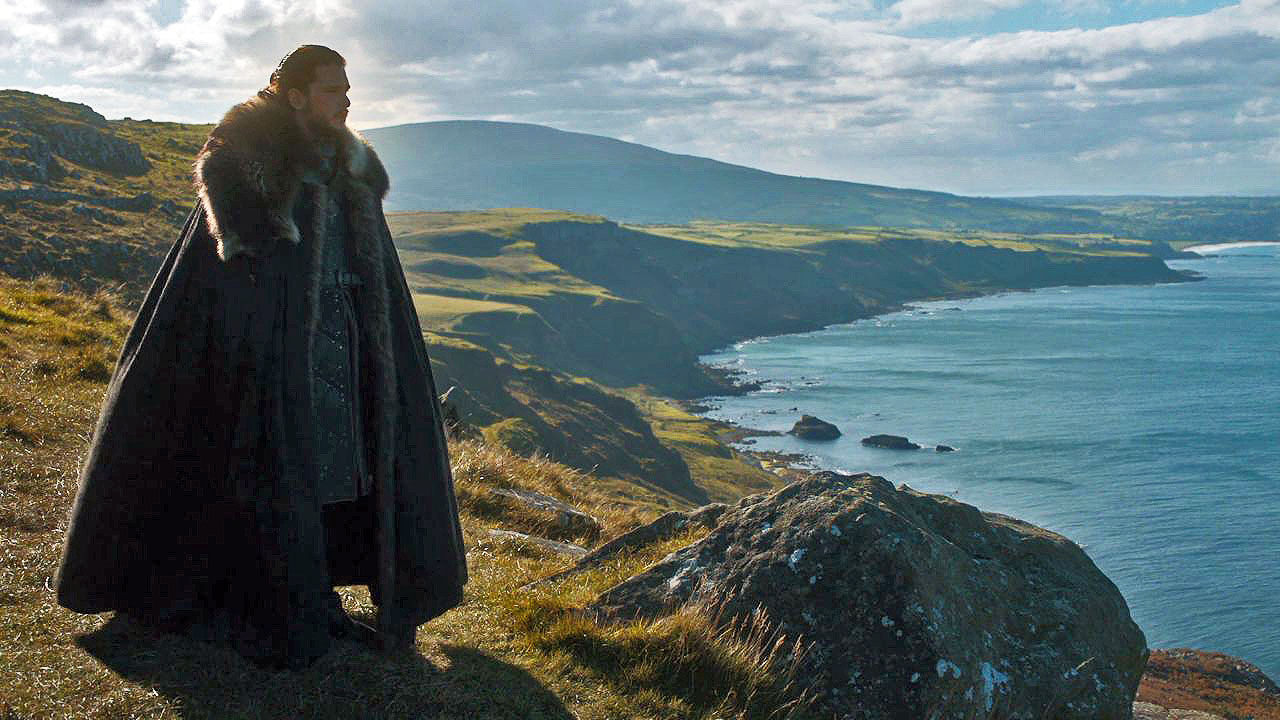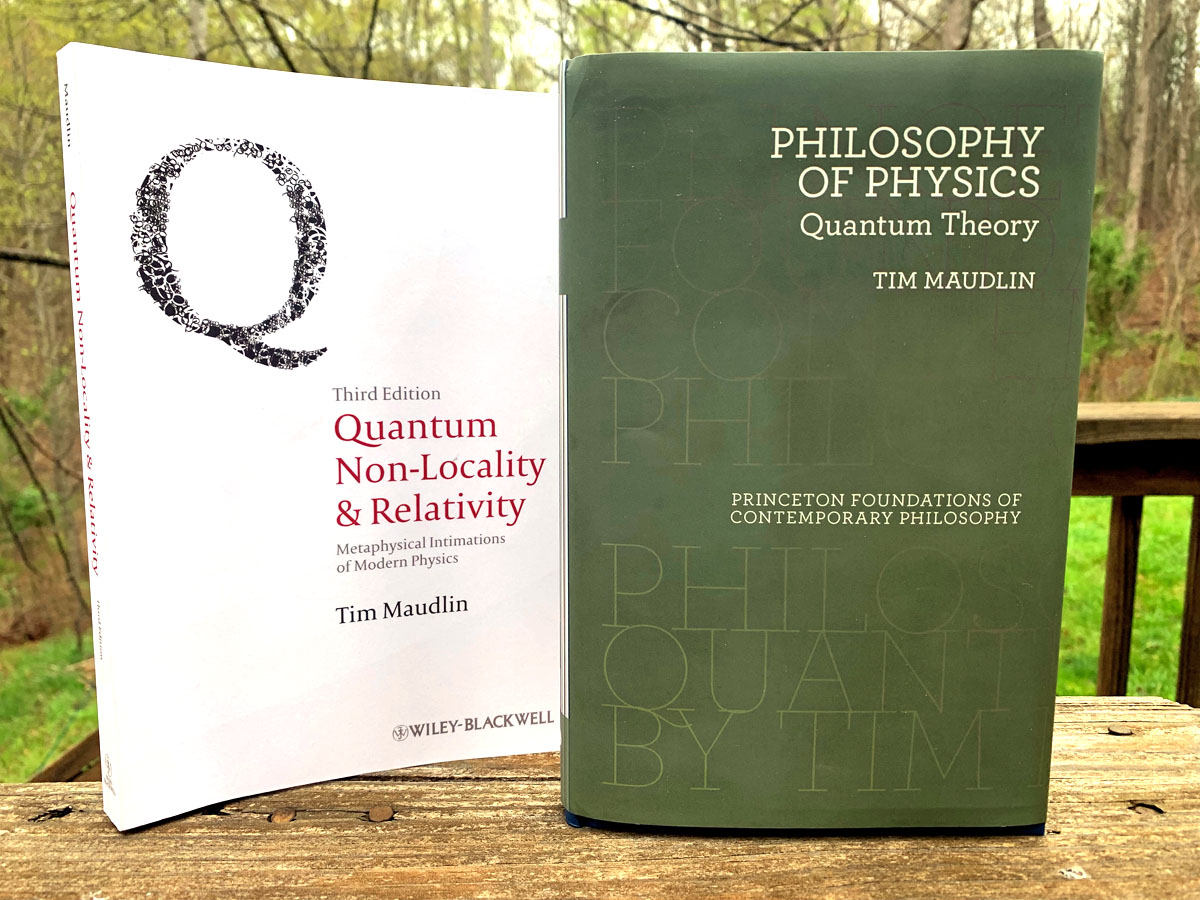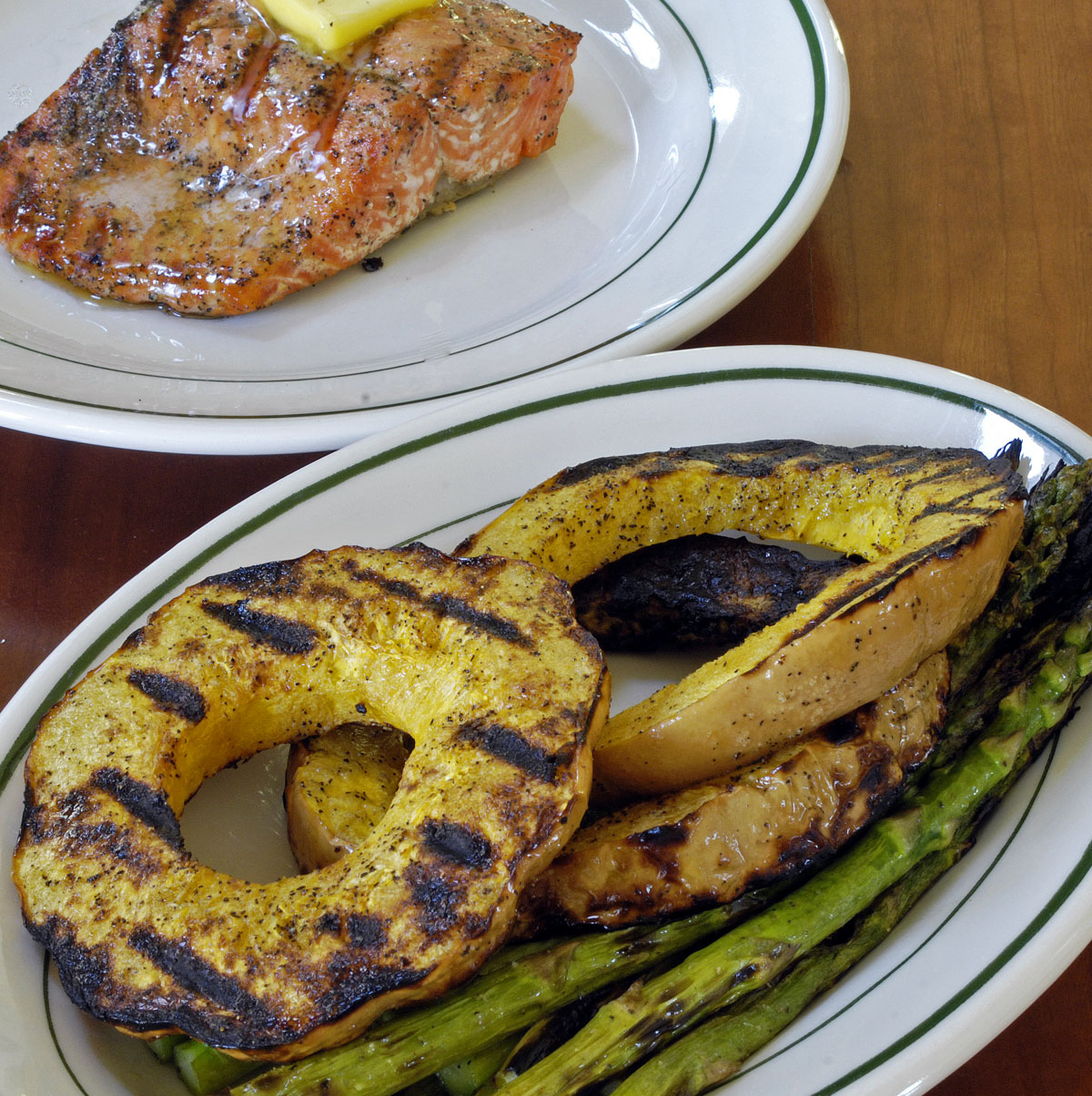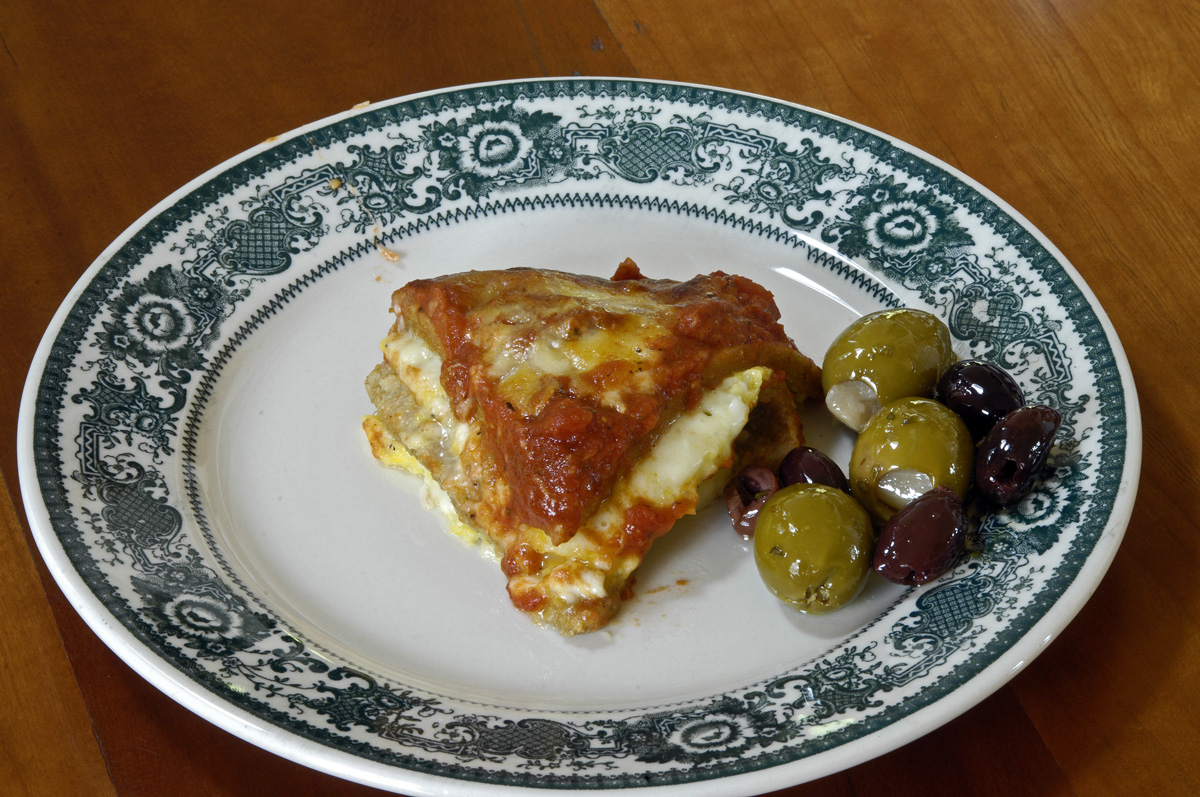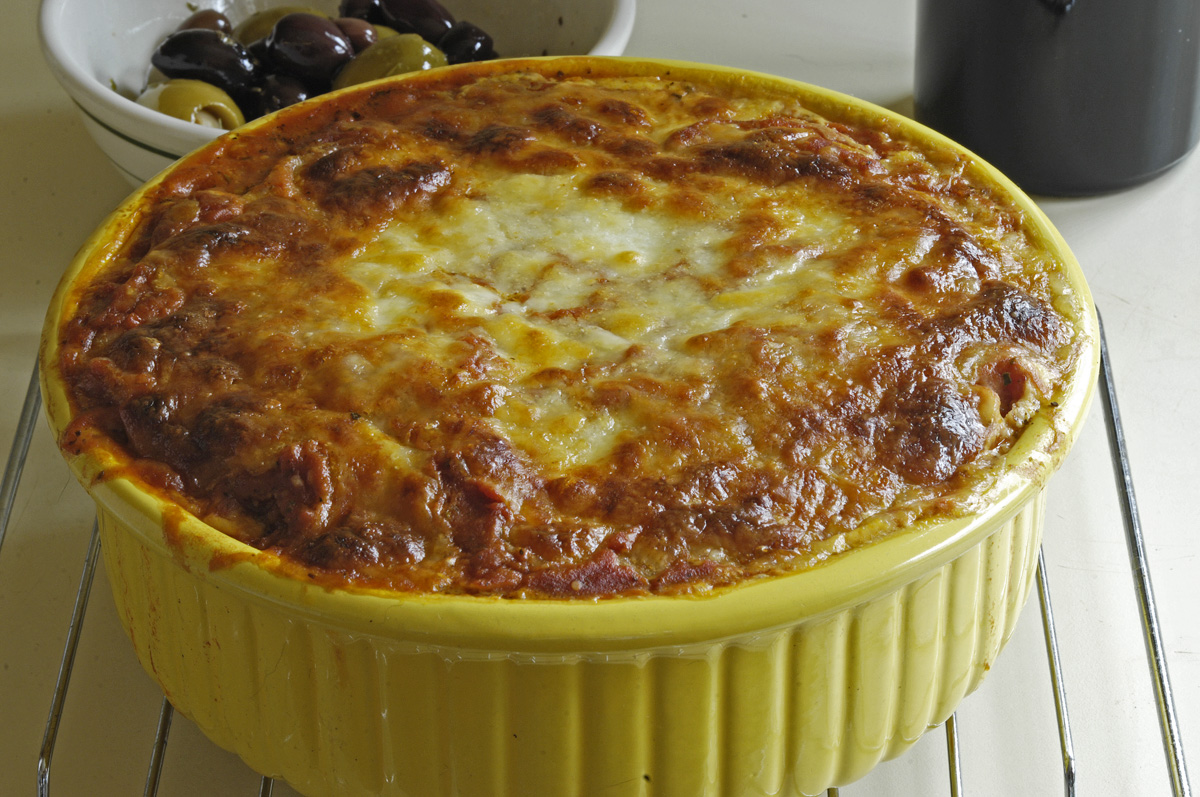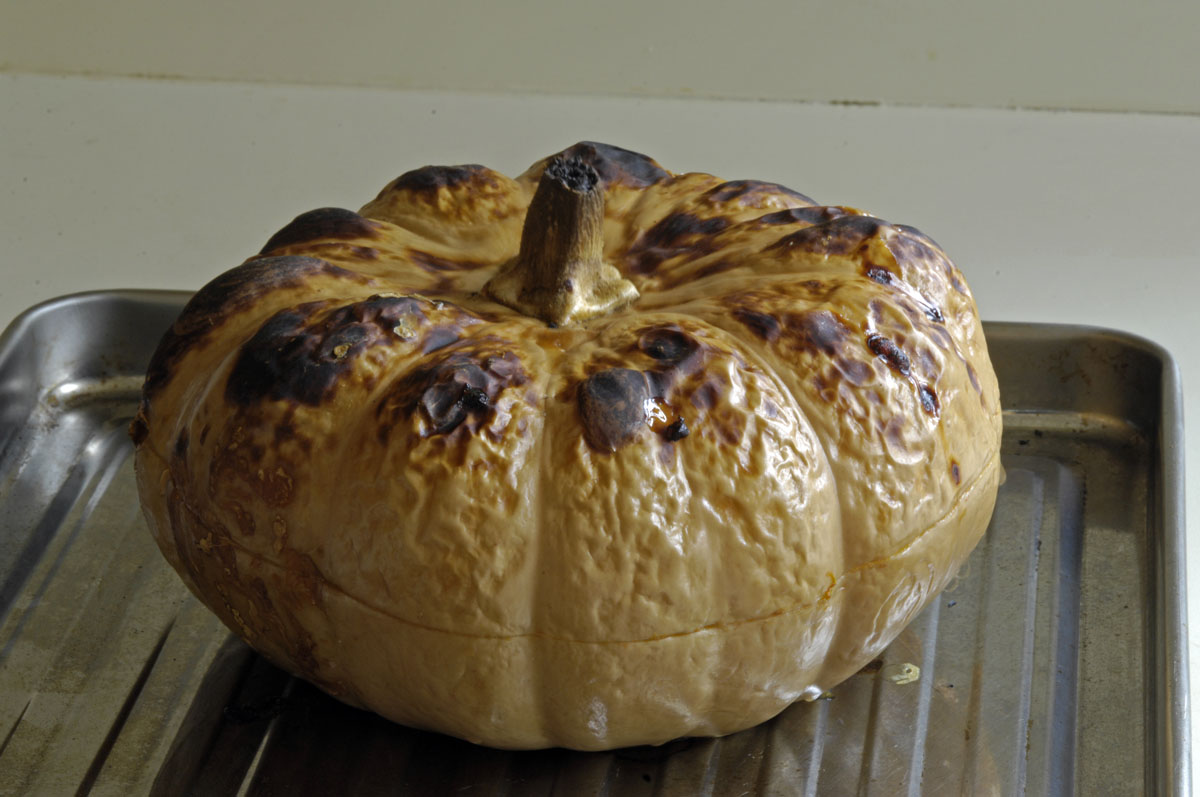On a rainy day this time of year, it’s hard to stay away from the windows. Above, rain is falling, and the windows are wet and a bit foggy. Below, it’s the morning after the rain, and the sun has come out. The woods are rapidly turning green, but the leaves are only about half out. Lily is in her favorite spot.
Game of Thrones: Season 8, episode 1
Ken Ilgunas and David Dalton are reviewing each episode of the final season of Game of Thrones. Check the “Game of Thrones” category to list all of these posts.
David:
Mornin’, Ken…
I greatly enjoyed this episode, and what struck me is how the moral middle ground of former seasons is gone. Now the forces of good and evil are lining up as the surviving characters choose sides — good people at Winterfell, wicked people at King’s Landing. It put me in mind of a hymn:
Once to ev’ry soul and nation
Comes the moment to decide,
In the strife of truth and falsehood,
For the good or evil side;
Some great cause, some great decision,
Off’ring each the bloom or blight,
And the choice goes by forever
‘Twixt that darkness and that light.
(The words were written in 1845, by James Russell Lowell, as a protest against both war and slavery. The hymn is sung to the hymn tune Ebenezer, which is very much in a minor key.)
Consider poor, poor Theon, who was tortured by living in a moral vacuum as much as he was tortured by Ramsay Snow. Now Theon, having rescued his sister and feeling a bit better about himself, will go to Winterfell to fight with the forces of good. Even Jaime had to choose sides and joins the good people at Winterfell — though the first person he sees is Bran. (I’m hoping than Bran will forgive Jaime for knocking Bran off the tower because Bran foresees that Jaime has a part to play. And would Bran be the Three-Eyed Raven if he had not fallen?)
There is a huge imbalance, though. In the wicked south, we have only Cersei, Euron, and a new sellsword. And how much longer can Euron survive until Cersei orders him snuffed? Unless Cersei cooks up something new, the ingredients of drama (including characters) are now scarce in King’s Landing. Will Cersei have to rotate uselessly in dramatic circles for a while, the way Daenerys once circled in the desertlands waiting for her next cue? If not, how will Cersei stay in the thick of things? Who is there to even engage her in dialogue, since we’re all as tired of Euron as Cersei is?
Whereas at Winterfell we have a great surplus of characters all cramped up in inadequate accommodations. Thus we can expect treachery at Winterfell. But who will betray whom? Daenerys is now the character in the most awkward position. Jon Snow is suddenly the biggest obstacle to what she regards as her right and her destiny — the throne. Daenerys is faced with the choice of either great sacrifice or great cruelty. It is Sansa who is most critical and who expresses the most discontent with the present situation. Arya is an enigma and a wild card.
Though many reunions were had and much exposition was exposed in this episode, we still have many things to wonder about. Any character who is still alive can be assumed to have a critical part to play before the end. Where is Melisandre? Why was Gendry brought back after a long absence? What work do two of my favorite characters — Brienne and Podrick — still have to do? How will Tyrion and Varys get back into the thick of things? Is Sam superfluous now? Is it meaningful that Yara chose to go back to the Iron Islands?
One character, though, has risen to the top of the dramatic heap — Bran. Bran now supplies much of the plot’s remaining mystery. Isaac Hempstead Wright has grown up in this role. I believe he was 12 years old when the series started. Now he is 20 and is as perfectly cast as any character in the series. All the wise old maesters are dead, but Bran is now wise. The transformation of Bran is one of the most beautiful surprises of the entire series. I would not be surprised if Bran upstages Jon Snow hereafter.
I’m not going to make any guesses about where it’s all going. I remain convinced that George RRRRRR Martin and the HBO writers still have many shocks and surprises up their sleeves and that they’ll pull this thing off in the end. I’d say they’re off to a great start with the season opener.
One piece of foreshadowing continues to needle me: When the dragon gave Jon Snow that funny look, what did it mean?
An aside: The New York Times has a piece this morning about how GoT tourists in silly costumes are flooding Northern Ireland, oblivious to the area’s real history. Jeekers, people. Get a life.
Ken:
Hi David. I thought this was a rock solid beginning to the final season. We are primed for small personal dramas. (Will Arya and the Hound fully reconcile? Will Arya and Gendry have the show’s final romance?) And we are primed for the big picture political dramas. (Who will be the ultimate king or queen of the seven kingdoms?) Some stray thoughts and questions….
• Euron Greyjoy has tested our patience long enough. I sense that Cersei will double-cross him soon and keep his ships. You’re right: Once that’s settled, there’s not much else for her to do, apart from move her military machine. Might we get a good Martin-esque twist if Cersei uses her political talents and maliciousness for good? Her collapsing under her own treachery and deceit seems too simple, but sometimes that’s how things play out, too.
• Yara Greyjoy is going to take back the Iron Islands so Team Dany will have a safe haven should things go wrong with the zombie war. Does this mean that such a course of events is inevitable?
• There are countless things foreshadowing the demise of the Dany-Jon love affair. Verys says “Nothing lasts” as he looks down on them. The dragon gives Jon an odd look when Jon and Dany are making out. (I think the dragon’s saying to Jon, “You better think about what you’re doing.”) And Dany seems like she’s properly smitten (you have some special word for this, I remember, which sounds like “luminescence,” right?) [Note from David: Limerance!] whereas Jon is more hesitant. (Romantic unreciprocation spells disaster!) As for who takes power… Jon has never cared for titles, just what’s right and just. It seems most appropriate for him to allow his allegiance to Dany to persist (even if he’s convinced of his superior claim), but the show seems to be moving in the direction of Jon taking over eventually, and it would be too weird for them to do that as one half of another incestuous couple. The most reasonable solution to this is Dany dying in a moment of sacrifice, and Jon taking power only when he’s called to. The person in the middle of all of this is Tyrion, who is firmly on Team Dany, but who has lost favor and who has a soft spot for Jon. It’ll be interesting to see how he navigates the situation.
• Acting award of the week goes to Sam Tarly. So many relatives die on this show. So many people are reunited after years apart. When the main characters learn of deaths or are reunited, their reactions are sometimes weak, and the acting job is uninspired and half-assed. (Think of those YouTube videos of military fathers returning home to their teary, jubilant children—that’s how real people react.) The actor playing Sam gave everything he had, and I think he found a nice balance between grief and indignation. On the other hand, Arya’s emotional reunion with Jon seemed forced and forgettable.
• I do think the show is still missing some of its old Martin magic, and we see this most clearly with the absence of good humor. Martin is a very funny and clever writer. Think of all the Verys/Tyrion/Little Finger dialogue from the early seasons. A lot of that snappy, funny dialogue came straight from the books. Now we have just a few poorly crafted testicle (or lack of testicle) jokes. They have squandered poetic opportunities, too. Think of when Jon asks Dany how to ride a dragon. “Nobody does,” she says, “until they ride a dragon.” She could have quoted a fabled line from a dragon-riding ancestor, or shared a metaphor about riding the wind, or something of the sort. (PS: Why don’t they make some sort of dragon seat for the riders? It looks impossible and dangerous to hold onto those wobbly dragon spinal spikes.)
• House Glover has it coming to them. Count on them getting sacrificially obliterated next episode.
• Great dragon ride! That’s an amazing use of scenery (as you pointed out last week), and it’s a great character-building scene, as Jon begins to embrace his Targaryen side.
• Random thought of the week: It’s way too late, but I wish the show had incorporated a character or two representing the lowest classes (i.e., the ordinary people). Sure, there are lots of characters who have risen to be warriors and advisors with merit, but I’d like a few characters who are firmly stuck at the bottom, and who look at the people of the great houses from afar and from their hovels, because that’s what it would have been like for 99% of the people in such a time.
Main characters that are unaccounted for: The Red Woman, Brienne and Pod, Daario Naharis (please no), Jaqen H’ghar.
Next big character to unexpectedly die: Onion Knight
Unanswered questions:
Are we going to have a sit-down convo with the Night King, or is he just an evil force of nature without soul and complicated motivations? I feel like we need a little more explaining about his motivations…
What will be the form of government in the end? Still a straight up monarchy?
Are there no caribou or moose for the dragons to hunt? Just barnyard animals?
Will there or will there not be elephants?
Predictions: Jaime will die in the arms of Brienne.
David:
Speaking of humor, some of it went right over my head. This morning’s review in the New York Times mentions these lines:
Tyrion: “The last time we spoke was at Joffrey’s wedding, a miserable affair.”
Sansa: “It had its moments.”
Game of Thrones countdown
Since its beginning in 2011, Ken Ilgunas and I have made a tradition and a sport of watching and subsequently deconstructing each new episode of Game of Thrones. If Ken was here, we watched it in the evening and started our “Thrones talk” at breakfast. If he wasn’t here, we did it in email. As literary confederates, there are many things about which we are in complete accord. But that’s not always the case.
To prepare for the final season (which starts at 9 p.m. Sunday, April 14, on HBO), we each re-watched the previous season, Season 7. Our discussion of the re-watching follows, lifted from email. Hereafter we will “co-blog” each episode of the final season, hopefully by the Monday after each episode.
Ken:
Morning David. You’ve told me you just binged Season 7. As you know, I had some issues with the last season (which I’m sure I’ll get to), but I’m curious: What were your impressions, and what do you think we can expect from Season 8, the final season?
David:
Yep. I binged, and I was transfixed. Two years was enough to make it fresh again, though of course I remembered most of what happens. Somehow the flaws that we’ve discussed mostly melted away. What stood out in re-watching were the incredible quality of the dialogue, the perfect casting and brilliant acting and directing, the settings, the photography, and the detail. Brilliant dialogue, of course, requires more than just the dialogue. It can occur only with strong characters inside a good story. The sibling spats are brilliant — Jaime and Cersei, Sansa and Arya. (There is something particularly vicious about sibling spats.) Another remarkable thing about the dialogue is that it’s just as good whether it’s dialogue about war and affairs of state, conducted by the powerful; or taunting and ribbing by the lowly, as in some of the dialogue while the zombie-retrieval crew were laboring north. I believe I have only one strong complaint. That’s the zombie thing, which I continue to see as an un-original selling-out to a fad, and the tail-end (I hope) of the fad at that. It’s a shame to mar something so original with more zombieness.
Anyway, as for the flaws, I’m a pushover when it comes to suspension of disbelief, as long as the story is not in the here and now. I rarely binge. But re-watching Season 7 put me into a trance.
The New York Times had a piece about how Northern Ireland is now overridden with GoT tourists. Having hiked the Scottish Islands with you since we first watched Season 7, it all looked familiar (and even more beautiful). I’m just glad that all that tourist traffic isn’t descending on Scotland, because those coastal vistas work best when they’re clear of everything but sheep. I paid much more attention to the settings while re-watching Season 7. The settings are incredibly powerful. You’ve heard me say many times that certain kinds of stories can be told only in certain kinds of settings. The example I always use is that the moment a writer chooses to set a story in the American South, it’s a given that somebody is going to be repressed, oppressed, and miserable, and that the story will revolve around social and family conflict and whether key characters can or cannot be true to themselves. It would be much harder to tell a story like that in San Francisco, or Paris. Part of the genius of HBO’s GoT is that the producers understood the importance of epic settings, and they had the budget for it. Now we’ve got those places on film forever, though I hope those places never change. When the producers of Star Wars took us to Skellig Michael, I suspect that it was because Star Wars had to hit the new standard for settings set by Game of Thrones. What a good way to use a big budget! My TV no longer seems big enough. To top Skellig Michael as an epic setting, you’d have to get out among the stars — another setting in which epic stories can be told. Some settings enlarge us; some settings knowingly cramp us and suffocate us. Compare “Angela’s Ashes,” a very different Ireland from Skellig Michael or the seascapes of Ulster. My larger point is that, in HBO’s GoT, story and setting are brilliantly matched. It may be easier to appreciate those settings in a second watching, when the characters and dialogue don’t demand our full attention.
Now I just hope that the final season doesn’t let us down and that we end up happy and satisfied, with another epic for a lifetime, like Star Wars. If that happens, then it will be your curse to watch John Snow (a few years younger than you) and the other characters grow old, as my generation had to watch Luke Skywalker (a few years younger than me) and Leia grow old. These are stories that provide a mythic framework for our lives.
The New York Times also had an article about how GoT is a new economic model for television, with a budget that would have been unimaginable not long ago. Let’s hope that that model continues … as long as somebody can come up with stories worth that kind of telling.
Ken:
Your cheery take is heartening to read because I hope you’re right and I’m wrong. I’ve re-watched Season 7, and my second watching confirmed my original impressions: It is by far the worst GoT season. I say this for three reasons:
1. The fast pace of the season is out of step with the slow pace of the rest of the series. One can now travel across Westeros instantaneously (whether by horse, dragon, or boat) when, in a previous season, it would have taken a whole season for a character to move from A to B. They are practically teleporting. This isn’t me just quibbling about suspension of disbelief issues. The “slow storytelling” of GoT was one of the things that set GoT apart from all other shows. These were great opportunities for character development, and they made long-awaited path-crossings cathartic or dramatic (like the Hound vs. Brienne). The Jon-Dany introduction could have been a bit more exciting if they took an extra episode or two to cover Jon’s sea voyage.
2. The plot became bonkers. I know this is fantasy, and I’m prepared to generously suspend my disbelief with dragons and fire magic, but the expedition north to capture a zombie to bring it back to King’s Landing doesn’t work on many levels.
3. The dialogue was substandard. In previous seasons, we had interesting pairings of characters. Now, they just shove a bunch in the same room, where they jest and prod and deliver quippy one-liners. The scene with Jon and Dany in the cave was appallingly neat, and corny. The dramatic Jaime “death” and rescue scene, after the battle with the Dothraki, was beneath the writers’ standards. There was little character development. About 85% of the dialogue was exposition, reminding us of everyone’s past, their relationships with one another, and their plans for the future. What happened to stories about their lives or the relaxed and clever banter, such as the Verys/Tyrion banter, which was so good? This all exposes the writers’ need for good George RRRR Martin dialogue, which they no longer have access to.
I say all of this with deep respect for the writers, producers, and actors, and of course Martin. GoT, as a TV series, belongs in a tier of its own, and GoT episodes, during quiet parts of my last eight years (as sad as this sounds), have been some of my intensest emotional events. I fear the show has lost its Martin magic, and I truly fail to see how they’re going to wrap up all storylines, win the war against the White Walkers, and provide satisfying epilogues for the surviving characters—all in a shortened final season. I worry that the season will only be the movement of chess pieces, followed by gory CGI fests. There are only a handful of relationships to be mended; there aren’t many more secrets to be learned; there aren’t many dramatic character reunions to be staged; there are no new love affairs to be consummated.
I think GoT is going to live out the fate of 2007 New England Patriots, who had a perfect 16 win, 0 loss season, but who flubbed it in the Super Bowl against the Giants. I worry a dissatisfying finale will make the preceding seven seasons irrelevant and un-rewatchable. No one wants to be more wrong than me.
Updates
David:
Here is a critic in The Atlantic who agrees with you. Whereas I am in denial:
The Old Thrills of Game of Thrones Might Be Gone for Good
Ken:
I agree with everything he says, 100%. In ways, we wrote the same column, but his was far better. Indeed, I felt the same thing about the Littlefinger plot. The Stark sisters plotting against one another was ridiculous. We saw Littlefinger’s death a mile away…. I envy your denial!
David:
Your case is strong, and I will concede and throw in the towel and wail and gnash my teeth if it comes to that. But I also have to hope that the HBO writers and producers are smart, are aware of these dangers and past mistakes, and that they also have access to George RRRRR Martin, who I think would not hesitate to tell them what he thinks, even if his contract binds him to public silence. I do think that stories are safest in the hands of a single inspired writer whose only product is words rather than zillion-dollar productions.
May the force be with us.
Would you like for me to append a link to this piece as an update to our post?
Ken:
Sure, that’s a good piece.
The Old Thrills of Game of Thrones Might Be Gone for Good
The Old Thrills of Game of Thrones Might Be Gone for Good
The ontological wilderness
Philosophy of Physics: Quantum Theory, by Tim Maudlin. Princeton University Press, 2019. 234 pages.
Quantum Non-Locality and Relativity: Metaphysical Intimations of Modern Physics (third edition), by Tim Maudlin. Wiley-Blackwell, 2011. 298 pages.
John Twelve Hawks was clearly troubled, and I don’t blame him. (John Twelve Hawks is one of my favorite science fiction writers. I’ve written about him here several times and reviewed his books. Just search here for “twelve.”) I follow John Twelve Hawks on Facebook. He had posted a link to an article in the MIT Technology Review. The terrifying headline on the article is: A quantum experiment suggests there’s no such thing as objective reality. He made this comment about the article:
“Some philosophers are drawn to the the idea that humans are organic robots that make decisions determined by our own biology and environment. I think these ideas let us off the hook for the real choices we can make in our lives. A variety of experiments have shown that people who think they aren’t free feel that it’s okay to hurt another person. ‘Un-freedom’ becomes an alibi. So my day-to-day assumption is that objective reality might not exist, but assuming that it is encourages us to live responsible, compassionate lives. Please feel free to tell me that I’m wrong!”
Actually, academic philosophy has a word for humans as organic robots. That word is zombie. You can read the article on zombies here in the Stanford Encyclopedia of Philosophy. The zombie concept (as much as I detest zombie movies) is a useful concept in thinking about what it means to be a conscious, not to mention a decent, human being. If we are not zombies, then what is it in us that makes us something else?
It happened that I had just finished laboring my way through these two books when I came across John Twelve Hawks’ comment. I cannot follow most of the math of relativity and quantum theory. But I do think that I have a tenuous grasp of the gist of it. I have read a lot of books like this, and I imagine that John Twelve Hawks has, too (as would any science fiction writer who is worth the ink). If John Twelve Hawks was troubled by the suggestion that there is no such thing as objective reality, I was horrified. We are living in an era in which many people feel that they are entitled to their own facts and their own reality. Do we really need to embolden fools with the notion that cutting-edge physics is on their side?
Tim Maudlin probably is the leading philosopher of physics. Quantum Non-Locality and Relativity is a standard textbook in this area. I knew that Maudlin would rip to shreds the idea that objective reality might not exist. I worried that, if Maudlin even bothered to respond to the piece in MIT Technology Review that it might be a long time before he got around to it. But I was wrong, because (as I discovered from Googling) Maudlin was all over it immediately. The Daily Nous is a place where academic philosophers hang out on line. Several philosophers of physics wrote responses, including Maudlin. Here is a link to Maudlin’s response, which has the headline If There Is No Objective Physical World Then There Is No Subject Matter For Physics. Here’s the money quote: “Objective reality is safe and sound. We can all sleep well.”
On what grounds does Tim Maudlin say that objective reality is safe and sound? To answer that question, you’ve got a lot of reading ahead of you. Modern physics is so strange that many physicists actually believe that all possible futures are real, and that a whole new and slightly different universe is created every time some tiny particle undergoes “quantum decoherence.” This is called the Many Worlds Interpretation. Maudlin thinks that’s bunk. For what it’s worth, I do, too. I would say that the reason the minds of many physicists are drawn to the Many Worlds Interpretation (MWI) is that MWI returns physics to a kind of determinism. The alternative to determinism is spooky, and they don’t like spooks. It was Einstein, I think, who first used the phrase “spooky action at a distance.” For what it’s worth, I like the idea of a spooky universe.
I am by no means qualified to actually review these books. But I do want to argue that, when these mysteries in physics are eventually resolved, it will be the most important new knowledge in our lifetime (if we are lucky and it happens in our lifetime).
If Quantum Non-Locality and Relativity could be boiled down to one key point, I would say that it’s this: Spooky action at a distance is real. Get over it.
Philosophy of Physics: Quantum Theory is a survey of current candidates for a grand unification theory that can reconcile the contradictions between relativity theory and quantum theory. We seem to not be getting any closer, really. (And I’m not getting any younger.) These theories are largely incompatible. Physicists and philosophers of physics are polite to each other in their books. But online they can be a bit snarky about theories they disagree with.
But you don’t have to be a physicist or a philosopher of physics to choose sides and root for the spooks. You could even come up with your own theory, though you’d have to provide the math to support it.
I confess I have a sneaky suspicion about where it’s all going. I like to play with the idea that there is nothing here. Maudlin actually comes very close to the temptation of that idea himself, in the conclusion of Philosophy of Physics: Quantum Theory (page 221):
“This possibility makes it tempting to deny the existence of any fundamental particles at all. If particles exist, the thought goes, there must at any given time be a definite, exact number of them determined by the number of distinct trajectories. But in a state of ‘indefinite particle number,’ no such exact number exists, so there can’t be any particles at all. Instead there is a field that can, in particular circumstances, act in a more-or-less particle-like way.”
That there is nothing here is by no means a new idea. In Eastern philosophy, as John Twelve Hawks would know, it is called maya, a kind of light-and-magic show. But that cannot mean that anything goes. Yes, the spookiness seems to be real. But nevertheless the universe remains strictly governed by its mathematics. Much of that math physicists already know. But the biggest piece remains elusive. As for maya, I am not very interested in what ancient philosophy says on the matter. They didn’t provide any supporting math. I only want to know what physicists ultimately figure out.
Good timing, Burger King
About a month ago, when the Green New Deal was at the top of everyone’s news feeds, right-wingers market-tested a new 2020 theme for scaring the deplorables: Liberals are coming to take away your hamburgers!
As reported by the Washington Post:
“They want to take your pickup truck. They want to rebuild your home. They want to take away your hamburgers,” former White House aide Sebastian Gorka declared at the Conservative Political Action Conference on Thursday. “This is what Stalin dreamt about but never achieved.”
Just to show us how extremely unattractive they are and to supply Twitter with meme material (people Photoshopped pig snouts on them), Republican members of the House Natural Resources Committee appeared on the Capitol Steps, laughing it up and eating hamburgers. Are we surprised that Republican members of the House Natural Resources Committee have no interest in reducing agricultural pollution or greenhouse-gas emissions, or that they’re not interested in animal welfare? Republican policy is about as beautiful as Republican members of the House Natural Resources Committee.
Now Burger King is test-marketing the Impossible Whopper, which is made from soybean roots. If everything goes well in the St. Louis test market, soon we’ll all be able to try the Impossible Whopper.
I Googled this morning for right-wing blowback against Burger King for daring to throw in with the Stalinist dream. But so far I’m not detecting it. The Impossible Whopper is, after all, the product of a corporation that wants to meet the demand for a more responsible (and probably healthier) burger. Whether it’s the decline of coal and oil or the rise of electric cars and efficient lightbulbs, it’s funny how the market keeps trampling on the policies of the Republican Party.
As far as I can tell, Burger King is not a significant donor to any political party. As for the California start-up that developed the Impossible Burger, let’s all root for their success. As far as I can tell, they do not get any government subsidies. Bill Gates is one of their biggest investors. For now, the Impossible Whopper will cost $1 more than a beef Whopper. Eventually, meat analogs such as the Impossible Whopper ought to become cheaper than beef, once they can be made in quantity and government subsidies to agricultural are re-aligned. A big change in the beef market would be hard for a lot of American farmers, I’m sure. But if the Republican members of the House Natural Resources Committee had good sense, they’d be analyzing needed changes in policy and helping farmers prepare for the future, rather than out on the Capitol steps making fools of themselves.

Just another photo-op for the glamorous figures of Republican history. Twitter photo.
Grilled pumpkin
The smallest of my little pumpkins — too small to make a pie or even a pot of pumpkin bisque — grill beautifully. You could grill any winter squash, of course. A Japanese winter squash, kabocha, has an edible skin, I believe. I grilled this pumpkin in the skin and cut off the skin at the table.
It was 70 degrees F on the deck today, and the daffodils are still blooming. So it was better to be slaving over a hot grill on the deck than over a hot wok in the kitchen.
If I haven’t mentioned it lately, in case you want to order seeds, the proper name of my little pumpkins is “Long Island cheese squash,” or “Long Island cheese pumpkin.” They seem to be everybody’s favorite for pumpkin pie, but I’m experimenting with their versatility. I still have about a dozen of them left from last year’s crop.
Pumpkin lasagna
Pumpkin lasagna was an all-day job, and I can’t say that it was a great success. No matter how hard I try, I just can’t roll homemade pasta thin enough. And the pumpkin, which was already soft from baking, lacked texture in the lasagna.
Still, I’m not going to give up on figuring out ways to use little pumpkins other than desserts. I think the next experiment will be with pumpkin parmigiana, in which raw, sliced pumpkin is fried in batter and then layered into a parmigiana.
Redundancy and its cousin, resilience

The cockpit of an Airbus A380. Notice the symmetry and redundancy, with two of everything (including the pilots). Wikipedia photo.
Quick now: How many hearts does an octopus have?
Answer: Three! However, two of the hearts are not backup hearts, exactly. Rather, the three-heart system is an element of octopus engineering that offloads pumping blood to the gills to two extra hearts. The two gill hearts, however, are a kind of redundancy.
Quick now: How many hearts does an earthworm have?
Answer: Five! Earthworm hearts, though, are a simpler form of heart called “aortic arches.” All five aortic arches share the load.
In us humans, hearts are a single point of failure. Maybe that’s one reason why heart failure is the leading cause of death. Some parts of our bodies are redundant, though. We have two eyes, two ears, two lungs, and two kidneys. Our redundant eyes and ears have benefits beyond redundancy, though. They provide us with stereo hearing and stereo vision. Our metabolic systems have all sorts of redundancies. As for our hearts, though they are single points of failure, they do have the ability to heal. That makes us resilient.
Quick now: How many “angle of attack” sensors were operating on the two Boeing 737 MAX planes that recently crashed?
Answer: One.
Since my post about the Boeing 737 MAX a couple of weeks ago, we’ve learned more about what went wrong, and about what Boeing intends to do about it. This piece in Vox provides some good new information. Though the airplane has two angle of attack sensors, the airplane’s control system received input from only one of them. For an extra $80,000, Boeing would include a warning light that would alert the pilots if the two sensors did not agree. The planes that crashed did not have the warning-light option. This blows my mind. Redundancy — meaning no single points of failure — was, or so I believed, an inviolable rule in aviation engineering. We can probably be pretty sure that it wasn’t Boeing engineers who decided to allow a critical crash-prevention system to have a single point of failure. Rather, it was Boeing executives, and their motive was money.
I am obsessed with redundancy. The last half of my career in newspapers (I am now retired) was in editorial systems. I was responsible for publishing systems that had to be 100 percent reliable. A failure would mean that you wouldn’t go to press. For that reason — at least back then — systems people had an understanding with the money people. The money people would say to the systems people, in essence: You’ve got to make sure that we can meet our deadlines and go to press every day. In return, the systems people would say to the money people: Well then, that’s going to cost you, because not only have you got to buy two of everything, you’ve got to build the systems in such a way that the backup system will immediately take over if the primary system fails.
In earthquake-prone San Francisco, where I worked for the last years of my career, the San Francisco Examiner and the San Francisco Chronicle had impressive levels of redundancy. There were three printing plants, geographically dispersed. At the main offices at Fifth and Mission, there was a diesel generator for backup power that was the size of a locomotive. The computer systems were redundant. If a failure was detected by “heartbeat” systems that monitor critical processes, the system would automatically “fail over” to the backup. With some systems, the failover process might take a minute or so. On some systems (such as the older Tandem mainframe computers), the failover was so fast and so smooth that you might not notice that there had been a failure. I remember one morning when a Tandem technician showed up to make repairs on the mainframe. “Really?” we asked. “What’s wrong?” The technician said that the system had failed over the night before (while the Chronicle was happily going to press, its staff of hundreds unaffected). The computer had called home to report the problem (many computers can do that), and a technician was dispatched. The computer had even told the home office what parts to bring.
An important part of my career responsibilities was risk management. I have written more “disaster recovery” plans that I care to remember. But I am still obsessed with redundancy.
Redundancy, actually, figures heavily into the plot of my first novel, Fugue in Ursa Major. In the setup and foreshadowing of the redundancy angle, Phaedrus says to Jake:
“The problem is, redundancy is not cheap…. Most people can’t afford much redundancy. I’m hard pressed for redundancy myself, these days especially. People have two cars, a spare tire, an extra toothbrush. But it’s hard to have redundancy when having just one of something you need is hard enough. But let’s don’t get ourselves depressed over dark possibilities. You’ve come to go camping on a high ridge, and smell the flowers and look at the stars. We can scare the daylights out of ourselves some other time thinking about how precarious our support systems are.”
Once upon a time (is it still true?) many systems on aircraft, such as the navigation systems, were triple redundant, like an octopus’ heart. It was very hard for me to believe that Boeing, of all companies, would allow a single sensor to bring down an airplane. Two airplanes.
According to Vox, Boeing’s fix for the 737 MAX includes monitoring two angle of attack sensors and warning the pilots if the sensors disagree. It is stunning that Boeing didn’t do things that way the first time. Boeing will pay dearly for cutting corners.
After redundancy has saved the day in Fugue in Ursa Major and as the story gets into the denouement stage, Jake teases Phaedrus, and Jake quotes his English-teacher mother. Joan is a dog:
Jake smiled up at the stars and scratched Joan’s head again.
“Aha,” said Jake, “I just figured out your real objection to monotheism.”
“What’s that?”
“A single god is not redundant. If god lets you down, you have nowhere to turn to. That’s an existentially ugly place to be, as my mother might say.”
Parched peanuts
Did our lean grandparents and great-grandparents eat snacks? I believe they did. What those snacks were, no doubt, varied from region to region. Popcorn, I suspect, is an old commodity. Here in the American South, parched peanuts were a common snack.
I have a clear memory from the age of 6 or 7. I was in my grandmother’s kitchen on a cold day, probably early winter. There was a fire in the wood stove. On the wood stove was an iron skillet. In the skillet were peanuts, and my mother and grandmother were parching them. Normally, children would not be invited into the kitchen to watch whatever was happening on the stove. But parched peanuts, clearly, were seen as a treat for children. And I’d wager that my mother and grandmother had their own memories of seeing peanuts parched as children.
My grandfather was a farmer, with a remarkably self-sufficient farm in the Yadkin Valley of North Carolina. One of the annual crops was peanuts. These days, nobody in these parts that I’m aware of grows peanuts. But you can still buy raw peanuts in the shell at one of the grocery stores in Walnut Cove.
Peanuts are parched in a hot iron skillet that has not been oiled. Parching them is not equivalent to roasting them. Roasted peanuts have a uniform brown color. Parched peanuts are more brown on the outside and cream-colored on the inside. Though I suppose that, if one were patient and very careful, one could fully roast peanuts in an iron skillet.
Peanuts and popcorn, I believe, were social snacks. When peanuts and popcorn were made, enough was made for everybody in the house. I’m guessing that even snacking back then, like the sit-down big-table dinner, was a family affair.
The far left
What do these people have in common?: Glenn Greenwald, Julian Assange, Jill Stein, David Sirota, Michael Flynn, Vladimir Putin.
The answer, I would say, is that we don’t really know. That’s what is so disturbing. But first, let’s review who these people are.
Glenn Greenwald is an American lawyer and journalist (though I would say propagandist) who now lives in Brazil. Some years ago, when George Bush was president and Greenwald was writing for publications such as Salon, he made sense (at least to people with politics similar to mine). It gradually became clear, though, that Greenwald had another agenda — a disguised agenda — and it wasn’t at all clear what that agenda was. Reasonable publications stopped carrying his material, and Greenwald and a couple of other people started an online news site, The Intercept, to run Greenwald’s material and other “adversarial journalism.”
Julian Assange is the editor of Wikileaks. Like Greenwald, Assange did reasonable work on government secrecy back when Bush was president. But, like Greenwald, it subsequently became clear that Assange had another agenda — a disguised agenda — and it wasn’t at all clear what that agenda was. Assange is still holed up in the Ecuadoran embassy in London. He is under investigation in the United States for his role in Russia’s attempt to undermine the 2016 election and elect Donald Trump.
Jill Stein, a member of the Green Party, ran for president in the U.S. in 2012 and 2016. In 2016, she got 1,457,216 votes. In December 2015, she was photographed in Moscow at the head table of a dinner, with Vladimir Putin. Michael Flynn, a notorious American Republican, also was at the table.
David Sirota is an American journalist — or should I say former journalist? — who recently went to work for the Bernie Sanders campaign. Before that, he had written, in The Atlantic, the Guardian, and other publications, hit pieces against other Democratic candidates for president, including and especially Beto O’Rourke. These publications have cut him off now, and, like Greenwald, no responsible publication will ever publish him again. Having mentioned Bernie Sanders, it might be good to remind ourselves that, though Sanders (a U.S. senator from Vermont) caucuses with the Democratic Party, he considers himself a democratic socialist. His party affiliation is not clear because, in Vermont, there is no party registration.
Michael Flynn is a retired U.S. Army lieutenant general. He is a Republican. Briefly, he was national security adviser to Donald Trump. Two days after the 2016 election, in a meeting in the Oval Office, President Obama expressed to Donald Trump “profound concerns” about hiring Flynn. Flynn was charged with lying to the FBI about his interactions with the Russian ambassador. During a sentencing hearing last December with Judge Emmett G. Sullivan, Sullivan told Flynn that “arguably you sold your country out.” As I mentioned above, Flynn was photographed in Moscow with Vladimir Putin and Jill Stein.
Vladimir Putin, of course, is the president of Russia. His career was in the KGB. He is an oligarch’s oligarch who takes great pains to hide his wealth and how he came by it. But some estimates are as high as $200 billion, which might make him the richest person on earth.
Now let’s return to our question: What do these people have in common? Again, there is a great deal that we don’t know. But there are some things that we can say with high confidence. They all hate and have actively worked to damage the Democratic Party. With the exception of Sirota, they all have secretive or mysterious connections to Russia. They all have worked hard to influence American presidential elections, all of them by seeking to damage Democratic candidates, intentionally or unintentionally to the benefit of Republicans.
The mystery here is what far leftists such as Jill Stein have in common with far-right actors such as Michael Flynn. Why would a leftist like Julian Assange work with Russia to elect Donald Trump and damage the Democratic Party? Why has the leftist Glenn Greenwald, who seems to like Russia better than his own country, been so busy this week saying that the investigation of Russia’s influence on the 2016 election is overblown? Why are so many right-wingers including Michael Flynn and Donald Trump so entangled with Russia? What is David Sirota’s real agenda, and is he, like Greenwald, Assange, and Stein, out to damage the United States by screwing with its politics? What does Sirota have in mind for Bernie Sanders’ campaign, and why would Sanders hire him?
Where the right wing is concerned, we know what their interest in Russia is: money, and the empowerment of oligarchies over democracies.
Where the far left is concerned, I can only speculate, because their agenda is disguised. My suspicion and working theory, though, is that theirs is a politics that demonizes the United States, that believes that reform is not possible, and that believes that the United States has too much power on the international stage. I strongly suspect that, as some die-hard supporters of Bernie Sanders have told me (they voted for Stein), they believe that the U.S. can’t be fixed without first tearing it apart. They scorn what they see as “incremental” reform. They saw Hillary Clinton as being as bad as, or worse than, Donald Trump.
Having tried to remain reasonably objective up to this point, here’s what I really think. These people on the far left are damned fools, and their agenda is dangerous. Part of the danger is that the activities of the far left (and that includes Bernie Sanders) are going to make it very difficult to explain to the American people during the next year that the Democratic Party is not about far-left socialism. As in 2016, that puts us at risk of seeing an election thrown to the right with the deliberate assistance of the far left. Could Donald Trump have won the 2016 election (if he won it — I have my doubts) without the assistance of anti-American players such as Julian Assange, Jill Stein, and Vladimir Putin? It could happen again, because the far left is getting back into action, doing again what they did in 2016 — promoting a divisive politics, and trying to damage the Democratic Party while apologizing for, and actually working with, Russia.
There really are people — including a few people I know — who believe that America can’t be fixed without tearing it apart first. I can’t imagine how they’ve convinced themselves that some kind of socialist utopia would emerge from the ashes of a failed American state. The opposite would happen. A corrupt, anti-democratic, Russia-like oligarchy would arise from the ashes of a failed American state. And that, of course, is what Russia and the meddling of oligarchs are trying to bring about, with the active help of some members of the Republican Party. Post-Trump, pro-oligarch anti-democratic Republicans are in control of the Republican Party.
I am an active member of the Democratic Party. I will try to summarize my politics as a Democrat, because I think I’m pretty typical. The word “socialist” is going to be used as a bludgeon word in the 2020 election. I do not identify as a socialist. I identify as a Democrat, though I have no problem with the term “democratic socialism” if the term is properly defined and properly used. I am a socialist to the very same degree that Republican voters who love their Social Security and Medicare are socialists. But unlike Republicans, I want to extend and improve the social safety net to make the lives and health care of working people more secure. I want to accomplish that not with deficit spending but with much higher taxes on the rich, especially on income that is produced by playing with capital rather than producing anything. I am intrigued by the idea of a wealth tax, to start reversing extreme inequality in wealth and income, which is a threat not only to the social fabric but also to democracy. I want an end to the corruption that allows the rich to avoid taxes.
I want a Green New Deal. I want immediate action on climate change, coordinated globally. I want a foreign policy based on diplomacy rather than vast military power. I want a foreign policy based on fairness and human welfare rather than oil and the profits of the rich. I want nuclear disarmament. I want religion out of government, and I would tax religion when it violates the contract of not meddling in government affairs. I want serious, rational regulation of corporations. I want serious, rational regulation of social media. I want a new, revised, re-thought version of a Fairness Doctrine that will stand in the way of Fox News acting as a privatized ministry of propaganda, so powerful that its pundits actually tell a foolish president what to say and what to do.
I want corporate money out of politics. I want a criminal justice system that is fair and merciful to the little people and that doesn’t ignore the criminality of the rich. I want a politics that does not scapegoat all the people that white people and their white religion hate. I want fair elections, with no one’s vote suppressed. I want an objective system of legislative districting and an end to political and racial gerrymandering. I want new infrastructure, but with less emphasis on roads and automobiles. I want greenways and highway underpasses for animal migrations. I want more public land, public parks, public access, and nature preserves, not less. I want humane treatment of wild animals and farm animals. I want a lower-carbon agriculture aimed at reducing the consumption of meat and other unhealthy commodities and that keeps dangerous chemicals out of the food chain. I want our oceans cleaned up.
I want affordable higher education at our public universities and some kind of amnesty on student debt, because our young people have been exploited to the point of enslavement. I want not just job training, but real education, education that brings back literature, languages, history, and music, and which doesn’t neglect science. I want the Democratic Party to figure out how to explain to people that no one likes abortion, but that Democrats don’t want to go back to a coat-hanger era in which we put women and doctors in prison. I want Democrats to be able to explain to Republicans that there’s a difference between a farmer’s shotgun and some damned fool’s arsenal of AK-47’s.
To say that we can’t afford these things is a Republican lie. It’s a nation of untaxed billionaires that we can’t afford. To say that having these things makes government too big is a Republican lie. Tell that to the Finns or Danes, the happiest people on earth. My list may seem long. But public policy already addresses all these things, but badly.
So, call me a Democrat, a democratic socialist, a leftist, a liberal … I’ll answer to all of those. You can even call me an incrementalist, if incremental improvements are all we can gain in our messed-up politics. But my politics and my hopes for America have nothing in common with anyone who thinks that you have to break America before you can fix America, or who thinks that our hope lies in Russia rather than in Washington.

